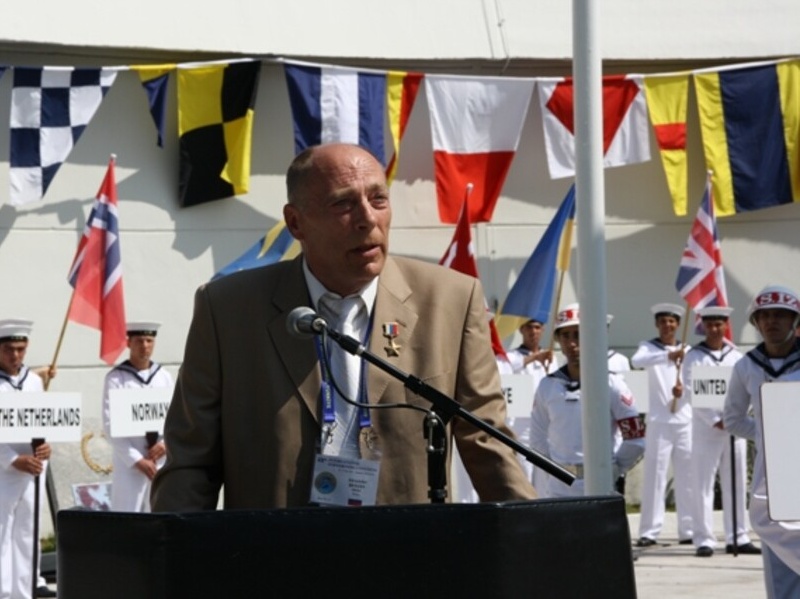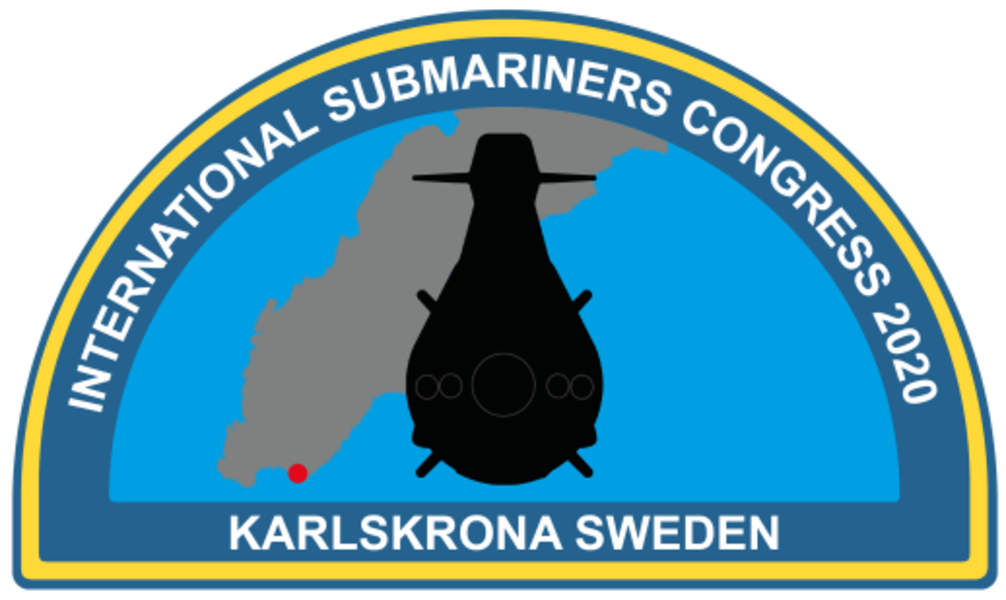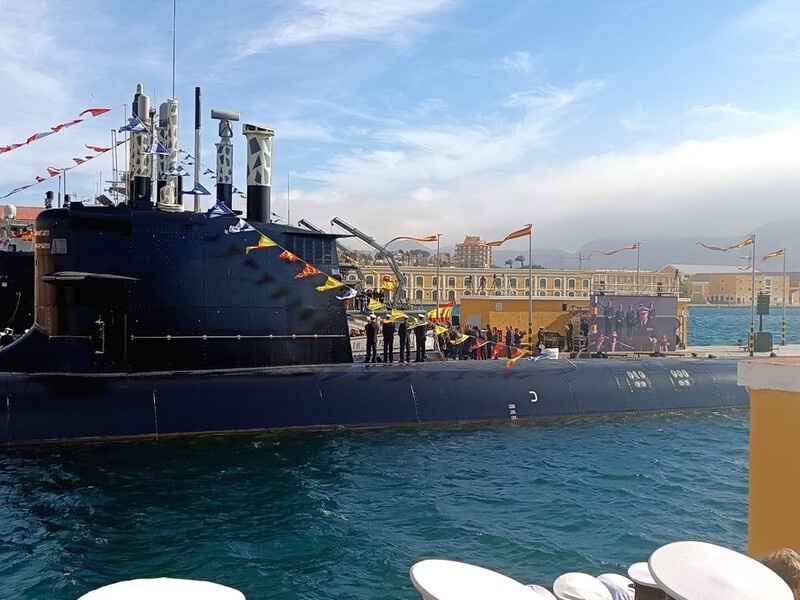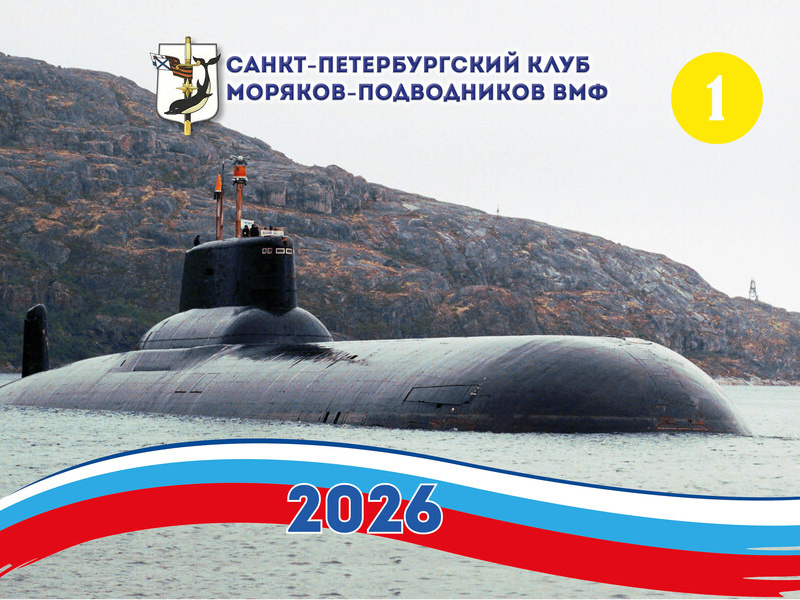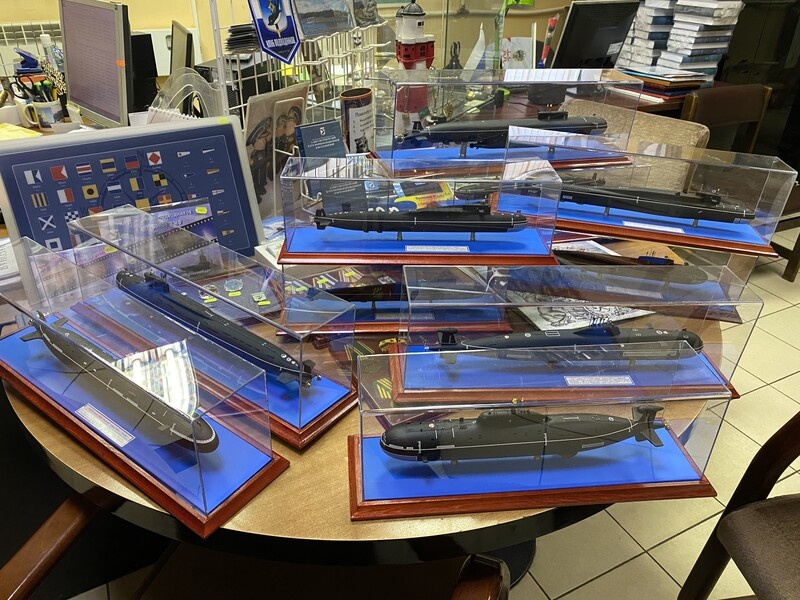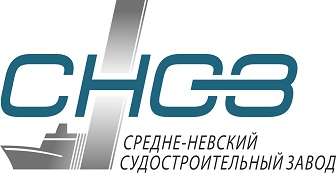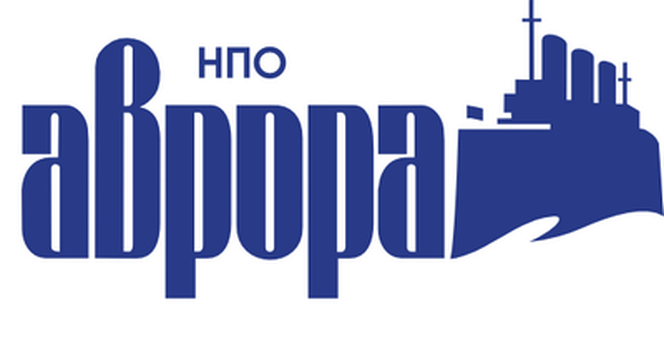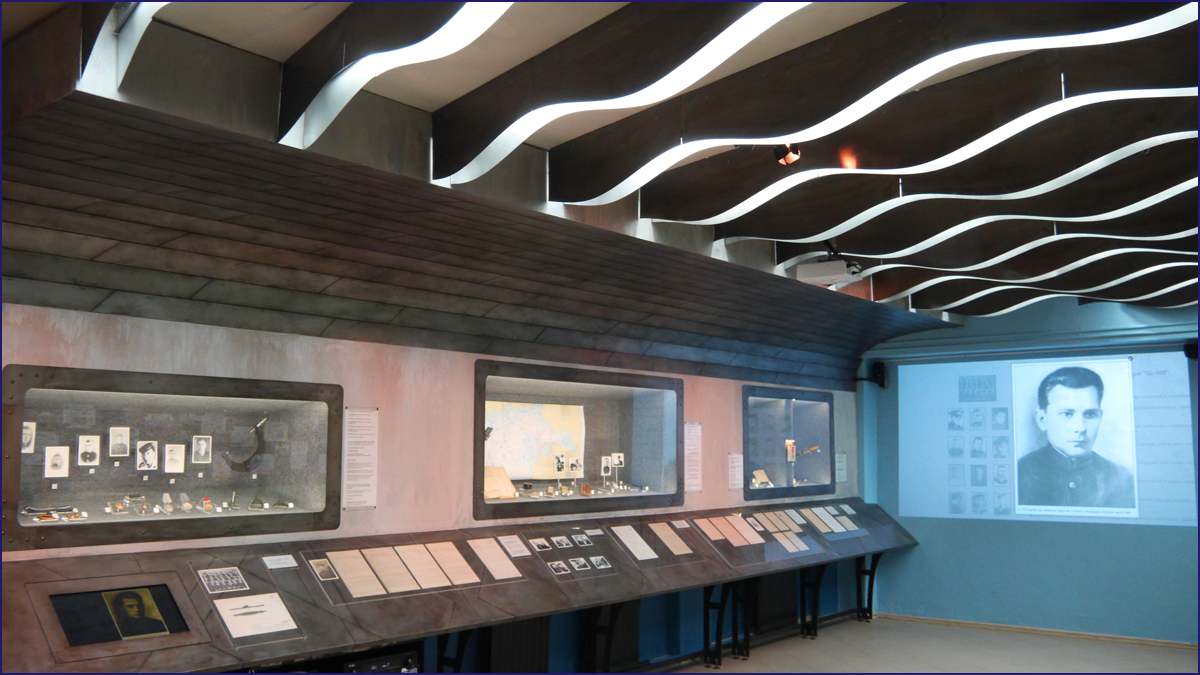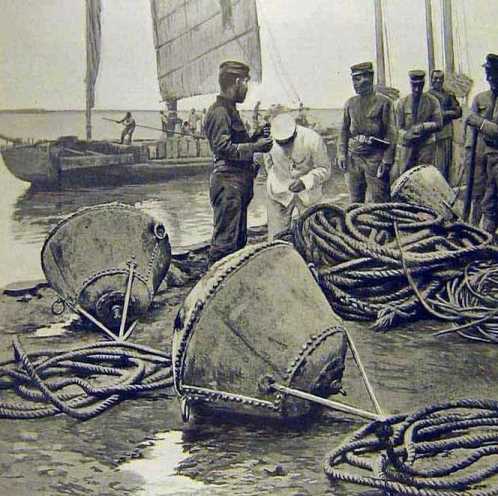Date: 14 JUN 2021
WWW.isausa.org
The Swedish International Convention (Congress) will meet on Sunday, 22 May 2022, and end on Thursday, 26 May 2022. The website for the Congress www.57isc.com
The Congress will be held in the City of Karlskrona
Karlskrona is an old naval town located on the mainland and the islands to the east in the Blekinge archipelago. The city center is located on the island of Trossö, whose city planning and older buildings were placed on the UNESCO World Heritage List as part of the Örlog town of Karlskrona in 1998.
An optional Baltic cruise is offered on Princess Cruise Lines. It leaves at 1800 on 28 May 2022. The trip of a lifetime makes port visits to:
Map shows port stops for Scandinavia & Russia (from Copenhagen). For more details, refer to the List of Port Stops table on this page.
A letter from Lars Nordenberg, Head of the Swedish Delegation. Hello, submarines from all over the world.
We hope you and your members have escaped the nasty Corona pandemic. Who could have guessed this a couple of years ago?
We have had low planning for the postponed Congress because the situation has been uncertain about how it would continue to develop. No trips or bookings have been made to save money. Refunds have been made to those who so wished to back out of Congress. Those who have left their conference fee on our account are marked in green on the website’s list of participants.
Several friends of the same age and I have now received at least one dose of vaccine. They are also starting to talk about us getting vaccination passes to be able to travel to several countries. Examine what applies to how you handle this in your country. It is not impossible that such a passport will be needed to travel between different countries.
Because of the vaccinations, it looks good for continued planning to be able to organize ISC 2022 in Karlskrona.
As you may have seen on our website, we have decided to hold the Congress on May 22-26, 2022.
Hotels Scandic, Aston, and Conrad are pre-booked.
As before, we only received about 100 rooms at Scandic, which is why we suggest that these should mainly be used as double rooms. For those who want a single room, we recommend Hotel Aston or Conrad.
As for your application for participation, we look forward to it as soon as possible, but no later than 31 December 2020. We want payment of the conference fee no later than the last February 2022. We may need to increase the conference fee slightly (15-20 $) due to the costs incurred by Corona Pandemic. Another option is to reduce something on imaginary gifts and gadgets. See updated information on the website. Feel free to pay by bank transfer instead of Credit card payment via Pay Pal, which has a higher fee. For those of you who have already paid and left your money, there will be no increase.
Distribute this information to all your members who intend to attend the long-awaited Congress of 2022.
Take care of yourself, and welcome to Karlskrona 22-26 May 2022.
Lars
Join 31 Other Nation’s Submariners for fun and travel; once this Virus is gone.
Consider becoming a member of the ISA-USA; you will benefit in many ways.
Be part of a 50-year tradition of international friendships of submarine sailors. Check out www.submariners.org for the history of the International Association
Travel to foreign countries to participate in conventions that usually include thirty-one states in attendance.
Establish friendships with submariners from other nations.
Contribute your Submarine history and experience in our World Wide e-mail blast.
We Cheerfully accept members that have not served but are interested in worldwide submarine activities
ISA/USA Lifetime membership only $50.00.
ISA/USA Membership Application. All new ISA/USA members receive a Membership card, ISA/USA Patch, and a new larger Vest Pin. On our weblink below and print an application:
Send completed form and membership fee to:
John Bud Cunnally E.T.C. (SS.) Ret. USN – President
International Submariners Association of the USA (ISA/USA)
4704 Coppola Drive
Mount Dora, Fl 32757-8069
Sweden identifies wrecks of warships discovered in 2019
AUTHORITIES
May 14, 2021, by Naida Hakirevic
The wrecks found at Vaxholm, Sweden, in the autumn of 2019 are warships Apollo and Maria, maritime archaeologists at Vrak – Museum of Wrecks have confirmed.
Both built-in 1648, the ships in question were deliberately sunk in 1677 at Vaxholm.
Wood samples, measurements of deck beams and frames, and thorough archival research have led to an answer about which ships were previously discovered.
The museum’s maritime archaeologists confirmed that the ships are the warships Apollo and Maria, which were transporting troops to Poland in preparation for an invasion by Charles X Gustav. Both ships took part in the Battle of Møn in 1657 and were also used in the Battle of the Sound in 1658.
“Identifying the ships has been a real mystery to solve, and there were many pieces that needed to fall into place,” Jim Hansson, maritime archaeologist and project manager for the dives at Vaxholm, commented.
Intensive efforts to identify the ships
To reconstruct the ships, work began on making sketches and digitizing them. By measuring deck beams and frames and then matching that information with hull details, the archaeologists were able to get a good picture of the size and shape of the ships.
“We found that one ship had been 8.7 meters at its widest point,” Hansson says.
“By having both the width and shape of the ship, we could estimate the length to be about 35 meters. This also matched well with the length and width ratios that were common in the 17th century.”
Through archival research, the maritime archaeologists came across two ships, built-in 1648: Apollo, built in Wismar, Germany, and Maria, built at Skeppsholmen in Stockholm. According to the archives, their measurements were consistent with what they themselves had concluded. According to the sources, both ships would also have been scuttled at Vaxholm in 1677.
“The dimensions and shape of the ships matched the measurements from the sources. And the origin of the wood samples, where we had thought northern Germany for the smaller ship Apollo and eastern Sweden for the larger Maria, were also correct.”
“We also know that the huge ships of the same type as Vasa were primarily King Gustav II Adolf’s idea, and that idea died with him in 1632,” added Patrik Höglund, assistant project manager.
“After his death, medium-sized warships were built instead, since they could be used for many different purposes and were more seaworthy than the bigger unwieldy ships.”
“This type of medium-sized ship was equipped with heavy artillery. Although the ships were not especially large, they were very robustly built to withstand the weight of the artillery. The firepower of the ships grew in relation to their size, and Apollo and Maria are good examples of this.”
“The type of ships that Apollo and Maria represent have never before been documented archaeologically, and they have so much knowledge to convey,” he concluded.
The continuing investigations in Vaxholm are part of a research program called “The Lost Navy – Sweden’s ‘Blue’ Heritage 1450–1850”, which is being run in partnership by CEMAS at Stockholm University, the Swedish National Maritime and Transport Museums (which Vrak – Museum of Wrecks is a part of), and the Finnish Heritage Agency.
The research program is being funded by Riksbankens Jubileumsfond.
By Alexia Dellner
| 29 March, 2021
Mom Brain
“Fredagsmys” Is the Ultra Cozy Swedish Way of Doing Fridays
SKYNESHER/GETTY IMAGES
It’s Friday night, and you can finally unwind after a long week. And boy, do you need it. Except you’re so drained from the week and lacking in the inspiration that you can’t decide what to do. Should you try out one of the new outdoor eateries in your neighborhood? Should you order takeout and facetime with your bestie across the country? Riddled with decision fatigue, you end up doing neither—instead, you just scroll through Netflix for an hour trying to decide what to watch while picking at last night’s leftovers and letting your Sancerre get warm. Not a wrong way to spend the evening necessarily, but not great either. Enter: Fredagsmys, the Swedish way of doing Fridays that we should all be embracing. Yes, the same people that brought us eco-friendly dish towels, the creamiest oatmeal, and adorable baby names are schooling us on how to kick off the weekend. And once you learn our ways, you’ll understand why the Swedes are some of the happiest people on earth.
Wait, so what is fredagsmys exactly?
Literally translated as “cozy Friday,” the basic idea behind this Swedish ritual is simple: You relax with family or friends on the couch and have an excellent chilled-out time. Snacks are required (think: chips and pick ‘n’ mix sweets), watching TV while snuggled under a couple of blankets is usually involved, board games may be played, and many Swedes eat tacos. Yes, really.
Where does it come from?
This tradition dates back to the 1990s and was embedded into the everyday culture when a marketing campaign for chips encouraged everyone to stay home on Fridays and enjoy some junk food after a long week of working hard. There are similar concepts in Norway (fredagskos) and Denmark (fredagshygge), but I like to think that we Swedes do it best.
OK, so how do I practice fredagsmys myself?
Fredagsmys may look a little different for everyone, depending on whether you’re spending it with family or friends. For me, my fredagsmys routine before having a kid usually involved friends, wine, and the latest binge-worthy series. Now it’s more of a Disney movie and Veggie Stix type of affair, but it’s just as fun and something we all look forward to every week. We turn off our devices and enjoy simply being together.
Regardless of whether you’re embracing fredagsmys with family, friends, or four-legged pals, the main principles are the same: spending time together with loved ones and relaxing while enjoying some easy-to-make food (hence why many Swedes set up a serve-yourself taco bar but anything that requires minimal cooking will work). By building this day into your week, it takes the pressure off coming up with a fantastic or significant way to mark the end of the workweek.
And as for the rest of the weekend? Well, Saturdays are for lördagsgodis—Saturday sweets. But that’s a story for another time.
US Navy Wants $110M in FY 22 R&D Funds to Develop Next-Generation Destroyer, Submarine
By: Mallory Shelbourne
2 June 2021 5:31 PM
USS Wayne E. Meyer (DDG-108) transits through the East China Sea on 15 November 2019. US Navy Photo
The Navy is seeking nearly $110 million to help research and develop its next-generation destroyer and submarine programs, according to service budget documents
The Fiscal Year 2022 submission asks for approximately $29.8 million to develop SSN(X) and about $79.7 million for concept development of the DDG(X) – which will succeed the Arleigh Burke-class destroyers.
According to the Navy’s research and development budget justification books, the service expects to start building SSN(X) – its next-generation attack submarine – in the second half of the 2030s. The service will use the FY 2022 research and development funding to help gear up for an analysis of alternatives (AoA) study.
“SSN(X) will continue to define requirement options and refine cost estimates to support a mid to late 2030s construction contract award. Initial efforts in FY 2021 focused on completing the Capabilities Based Assessment (CBA), conducting studies and technology development efforts in preparation for the Analysis of Alternatives (AoA), and beginning an Initial Capabilities Document (ICD). Funds also supported acquisition documentation development; engineering support efforts; and ship design management efforts,” the justification documents read.
“As the SSN(X) program continues to ramp up, FY 2022 efforts will focus on completing the ICD; the commencement of the pre-work for the AoA including the pre-study and CAPE approval; and the continuation of technology development and studies; acquisition documentation development; engineering support efforts; and ship design management efforts. Additionally, SSN(X) will leverage studies and development efforts from the Virginia Class and Columbia Class Submarines.”
Service officials have said the Navy will use the future Block VI Virginia-class boats to help inform the development of SSN(X), USNI News previously reported.
The most recent budget documents – unveiled last week – say the Navy will develop SSN(X) with an eye toward a near-peer threat, which aligns with the Pentagon’s ongoing shift toward preparing for conflict with countries like Russia and China.
The service wants to outfit the future attack sub with more weapons than what is on its predecessor, the Virginia-class boats, and improve both its speed and stealth capabilities.
“SSN(X) will be designed to counter the emerging threat posed by near-peer adversary competition for undersea supremacy. Unlike the VIRGINIA Class Submarine, which was designed for multimission dominance in the littoral, SSN(X) will be designed for greater transit speed under increased stealth conditions in all ocean environments and carry a larger inventory of weapons and diverse payloads,” the budget books read.
“It will also be designed to retain multi-mission capability and sustained combat presence in denied waters, with a renewed priority in the anti-submarine warfare (ASW) mission against sophisticated threats in greater numbers. SSN(X) will be required to defend against threat UUVs, and coordinate with a larger contingent of off-hull vehicles, sensors, and friendly forces. The primary goal of the SSN(X) program element will be to evaluate a broad range of submarine technologies, sensors, and combat system components required to produce an affordable platform which supports these mission requirements.”
Last year, commander of Naval Submarine Forces and Submarine Force Atlantic Vice Adm. Daryl Caudle said the Navy could go one of several routes with SSN(X) – base it on the Columbia-class submarine program design or the Virginia-class program design – or start from scratch.
“We’re going to get alternatives and make decisions on how to make this new SSN match what we need to stay ahead of our peers. This is definitely going to be increased speed: there’s no question that speed is basically important to improve every single joint warfare function. Speed is just so important – it plays out so well in all our wargaming, so it helps compensate for bad decisions, it also helps us get to the fight faster and helps us in all-domain maneuver warfare,” Caudle said at the time.
“We can never get enough payload capacity, so we do want submarines with large payload capacity. And what’s that going to look like in the future and how’s it going to be modular and customizable is going to be important. Of course, stealth is important, but not just acoustic stealth. It’s stealth across all spectrums. When this new SSN rolls out, we are going to have peer competitors that are going to be able to detect us not just acoustically but through algorithms that are going to break the water interface. And so those capabilities, we think, are coming, and we have to build and basically remain clandestine with those types of capabilities in play.”
USS Washington (SSN-787). HII Photo
As for the next-generation destroyer, now referred to as DDG(X), the Navy is planning for a new design and wants the ship to have the capacity to seamlessly add new systems as they come online.
“DDG(X) will integrate non-developmental systems into a new hull design that incorporates platform flexibility and the space, weight, power and cooling (SWAP-C) to meet future combatant force capability/system requirements that are not achievable without the new hull design” the budget documents read.
“The DDG(X) platform will have the flexibility to rapidly and affordably upgrade to future warfighting systems when they become available as well as have improved range and fuel efficiency for increased operational flexibility and a decreased demand on the logistics force. DDG(X) will provide an Integrated Power System with the flexibility to enable fielding of high demand electric weapons, sensor systems and computing resources,” the documents continue. “To decouple ship development risk from technology risk, accommodation of additional future capabilities will be pre-planned; these future capabilities may include: missile launchers capable of larger weapons to exceed adversary capabilities, high power lasers, or other systems that can be efficiently incorporated when developed and demonstrated.”
Chief of Naval Operations Adm. Mike Gilday approved the top line requirements for DDG(X) at the end of last year, USNI News previously reported. The Navy has done some experimentation for the design of DDG(X) using models at the Naval Surface Warfare Center Carderock.
The Navy is using a set-based design approach to develop the DDG(X) instead of a point-based design method, which would see the service starting with one design and evolving it over time to meet requirements.
With the set-based approach, the Navy will “start looking at a large number of designs,” Naval Sea Systems Command Chief Vice Adm. Bill Galinis said earlier this year.
“Maybe your requirements aren’t fully defined yet. You’re looking at different new technologies and everything like that. But it really kind of gives you an opportunity to look really across a broader spectrum, if you will, at different designs that are out there and then modulate on those to kind of learn about the different design attributes and neck down to kind of a single design,” he said at the time.
Zumwalt-class guided-missile destroyer USS Michael Monsoor (DDG-1001) leads a formation including the Arleigh Burke-class guided-missile destroyers USS Fitzgerald (DDG-62), USS Spruance (DDG-111), USS Pinckney (DDG-91) and USS Kidd (DDG-100), and the Independence-variant littoral combat ship USS Coronado (LCS-4) during U.S. Pacific Fleet’s Unmanned Systems Integrated Battle Problem (UxS IBP) on 21 April 2021. US Navy Photo
Report to Congress on US Navy SSN(X) Next-Generation Attack Submarine
2 June 2021 8:23 AM
The following is the 1 June 2021 Congressional Research Service In Focus report, Navy Next-Generation Attack Submarine (SSN[X]) Program: Background and Issues for Congress.
From the report
The Navy wants to begin procuring a new class of nuclear-powered attack submarine (SSN), called the Next-Generation Attack Submarine or SSN(X), in FY2031. The SSN(X) would be the successor to the Virginia-class SSN design, which the Navy has been procuring since FY1998. The Navy’s proposed FY2022 budget requests $98.0 million in research and development funding for the SSN(X) program. An issue for Congress is whether to approve, reject, or modify the Navy’s funding requests and acquisition strategy for the SSN(X) program.
Submarines in the US Navy
The US Navy operates three types of submarines—nuclear-powered ballistic missile submarines (SSBNs), nuclear-powered cruise missile and special operations forces (SOF) submarines (SSGNs), and nuclear-powered attack submarines (SSNs). The SSNs are general-purpose submarines that can perform a variety of peacetime and wartime missions.
Virginia-Class Program
Since FY2011, Virginia-class SSNs have been procured at a rate of two boats per year, and a total of 34 have been procured through FY2021. Most Virginia-class boats procured in FY2019 and subsequent years are to be built with the Virginia Payload Module (VPM), an additional 84-foot-long, mid-body section equipped with four large-diameter, vertical launch tubes for storing and launching Tomahawk cruise missiles or other payloads. When procured at a rate of two boats per year, VPM-equipped Virginia-class SSNs have an estimated procurement cost of about $3.4 billion per boat.
Submarine Construction Industrial Base
US Navy submarines are built by General Dynamics Electric Boat Division (GD/EB) of Groton, CT, and Quonset Point, RI, and Huntington Ingalls Industries Newport News Shipbuilding (HII/NNS), of Newport News, VA. These are the only two shipyards in the country capable of building nuclear-powered ships. GD/EB builds submarines only, while HII/NNS also builds nuclear-powered aircraft carriers and is capable of building other types of surface ships.
In addition to GD/EB and HII/NNS, the submarine construction industrial base includes hundreds of supplier firms, as well as laboratories and research facilities in numerous states. Much of the material procured from supplier firms for the construction of submarines comes from sole-source suppliers. For nuclear-propulsion component suppliers, an additional source of work is the Navy’s nuclear-powered aircraft carrier construction program.
Download the document here.
Cost Estimates for Lead Boat in Columbia-class Program Grow by $637M
By: Mallory Shelbourne
7 June, 2021 4:33 AM
Artist’s rendering of the Columbia-class SSBN submarine. US Navy Image
The Navy’s cost estimate for the lead ship in its new ballistic-missile submarine program grew by $637 million over the last year, according to the service’s Fiscal Year 2022 budget submission.
The estimated price for the future USS Columbia (SSBN-826), the lead ship in the class of 12 ballistic-missile submarines, is now $15.03 billion, compared to a $14.39 billion estimate in the FY 2021 submission, according to budget justification documents released late last week.
Much of the growth is due to an increase in planning costs, which went up by nearly $550 million, according to the documents. The planning costs associated with the first ship in the class went from $6.007 billion in FY 2021 to approximately $6.558 billion in the FY 2022 request.
The Navy shipbuilding account’s budget justification book attributed the cost increase “to updated program cost estimate” caused by the shipbuilder’s performance.
Following an “in progress review” into the class, the Navy refined the requirements for the Program to adjust to an estimate of the lead boat’s cost from the Pentagon’s Office of Cost Assessment and Program Evaluation (CAPE) and a 2020 cost assessment from the part of Naval Sea Systems Command’s engineering directorate that performs cost evaluations, according to the documents.
“Estimate updates were primarily driven by updates to shipyard construction performance and material escalation,” the budget books read.
Basic construction costs for the lead ship also increased by approximately $133 million – from $5.164 billion in FY 2021 to $5.297 billion in FY 2022. Ordnance costs decreased from $660.034 million in FY 2021 to $564.115 in FY 2022, rounding out the overall cost increase.
Flourish logoA Flourish chart
General Dynamics Electric Boat, the prime contractor for the Columbia-class boats, declined to comment when asked for an explanation behind the cost increase. The Navy acknowledged a request for information but did not immediately provide a statement to USNI News.
In January, the Government Accountability Office expressed concerns that the Columbia program was at risk of delays and cost overruns due to planning holdups at Electric Boat, USNI News previously reported.
“Electric Boat has generally not met its planned design schedule for the lead submarine due, in large part, to persistent inefficiencies associated with its new software-based design tool. The tool integrates new capabilities, such as some enhancements to material ordering and cable routing. The tool was also expected to reduce the average hours needed to complete design disclosures by almost half of the time required for the Virginia class program. The Program and shipbuilder expected these capabilities to enable greater efficiencies than previously possible,” GAO wrote in the report.
“However, problems with the tool’s software prevented the Program from fully realizing these efficiencies. Consequently, Electric Boat is behind schedule in producing key design products—design disclosures and work instructions—and as a result, is experiencing delays in ordering materials needed to support the construction schedule. These delays, in turn, led to cost increases as the shipbuilder requires additional work hours to complete design products.”
Remarks in the service’s budget books describing the cost increase say that “[m]ajor deltas in [Columbia] caused by shipbuilder performance (Plans and Basic), material escalation (Basic) accounting for class construction startup efforts split between SSBN-826 and SSBN-827 (Basic), Ordnance and Other; these reflect the updated program cost estimate.”
USNI News understands that many of the planning costs for a lead ship are one-time expenses, including design work, that is not necessarily indicative of costs for follow-on ships. For example, while the estimate for Columbia is now approximately $15 billion, the Navy’s most recent cost estimate for the second boat is about $9.3 billion. The FY 2022 submission did not include a Future Years Defense Program (FYDP) five-year outlook, so the $9.3 billion figure is from the FY 2021 submission.
The Columbia-class program – which recapitalizes the sea-based leg of the US nuclear triad – is the Navy’s top acquisition priority.
Seeking to justify the Navy’s FY 2022 shipbuilding request, which is only asking for one destroyer compared to the projected two in last year’s five-year outlook, a Navy official pointed to the Columbia-class program’s importance.
Delaying the purchase of the second destroyer “was absolutely an affordability question, where the goal of the department was to balance the first priority, which was investment in Columbia [ballistic missile submarine] recapitalization,” Rear Adm. John Gumbleton, the Navy’s deputy assistant secretary for budget, told reporters last week during a briefing at the Pentagon.
The Navy has a minimal margin for the Columbia program’s schedule and is under a time crunch to replace the 14 aging Ohio-class ballistic-missile submarines.
But GAO said in its report that the design tool issue could affect the shipbuilder’s capacity to meet the schedule for the lead boat in the class.
“Electric Boat faces persistent problems with its design tool leading to cost increases and schedule delays during the design phase,” GAO wrote.
“Late completion of design products threatens to impede construction progress and indicates challenges in the Columbia class program’s ability to achieve the lead submarine’s construction schedule.”
Report to Congress on Columbia-class Ballistic Missile Submarine Program
19 May, 2021 5:19 AM
The following is the 12 May, 2021 Congressional Research Service report, Navy Columbia (SSBN-826) Class Ballistic Missile Submarine Program: Background and Issues for Congress.
From the report
The Navy’s Columbia (SSBN-826) class ballistic missile submarine (SSBN) program is a program to design and build a class of 12 new SSBNs to replace the Navy’s current force of 14 aging Ohio-class SSBNs. The Navy has identified the Columbia-class program as the Navy’s top priority program. The Navy procured the first Columbia-class boat in FY2021 and wants to procure the second boat in the class in FY2024.
The Navy’s proposed FY2021 budget requested the procurement of the lead boat, as well as $4,014.7 million (i.e., about $4.0 billion) in procurement and advance procurement (AP) funding and $397.3 million in research and development funding for the Program. The Department of Energy’s (DOE’s) proposed FY2021 budget requested an additional $64.7 million in DOE development funding for the Program. Congress, as part of its action on the Navy’s FY2021 budget, authorized the procurement of the lead boat and provided $4,122.2 million in procurement and AP funding and $397.3 million in research and development funding for the Program. As part of its action on DOE’s proposed FY2021 budget, Congress provided $64.7 million in DOE development funding for the Program.
The Navy’s FY2021 budget submission estimates the procurement cost of the first Columbia-class boat at $14,393.4 million (i.e., about $14.4 billion) in then-year dollars, including $6,007.8 million (i.e., about $6.0 billion) in costs for plans, meaning (essentially) the detail design/nonrecurring engineering (DD/NRE) costs for the Columbia class. (It is a long-standing Navy budgetary practice to incorporate the DD/NRE costs for a new class of ship into the total procurement cost of the first ship in the class.) Excluding costs for plans, the estimated hands-on construction cost of the first ship is $8,385.7 million (i.e., about $8.4 billion). The Navy’s FY2021 budget submission estimates the total procurement cost of a 12-ship class at $109.8 billion in then-year dollars.
Issues for Congress for the Columbia-class program include the following:
the risk—due to the COVID-19 pandemic, technical challenges, and/or funding-related issues— of a delay in designing and building the lead Columbia-class boat, which could put at risk the Navy’s ability to have the boat ready for its first scheduled deterrent patrol in 2031, when it is to deploy in the place of the first retiring Ohio-class SSBN;
whether the Navy in its annual budget submission has accurately priced the work it is proposing to do in the Columbia-class program during that fiscal year;
the risk of cost growth in the Program;
the potential impact of the Columbia-class program on funding that will be available for other Navy programs, including other shipbuilding programs; and
potential industrial-base challenges of building both Columbia-class boats and Virginia-class attack submarines (SSNs) at the same time.
Download the document here.
Getting good sleep on board an operational Submarine in the US Navy-How many of us have experienced this????
A group of people sitting around a table playing cards
Description automatically generated with medium confidence
It’s great to hear that somebody’s actually getting a good night’s sleep, but who knew it would be aboard an active-duty nuclear submarine? That seems to have been the case for 42 lucky sailors aboard the USS Vermont, who last November took part in a study where they wore special glasses, called personal light treatment devices, to try to get their sleep schedule in a better rhythm.
Despite the glasses’ resemblance to the much-maligned ‘birth control glasses’ issued to servicemembers for decades, the study was a success, and many sailors wanted to keep wearing their glasses after it was over. While researchers still need to analyze the data, it could be a promising development for sleepy sailors across the Navy.
“These PLTDs are inexpensive, unobtrusive, and if they prove to be an effective countermeasure to circadian misalignment among submariners during underway periods, the US Navy will have one more option to help sailors get the rest and sleep they need to maintain their performance, enhance their moods, and potentially even improve their health,” said Dr. Sarah Chabal, a research psychologist with the Naval Submarine Medical Research Laboratory and the lead researcher on the study, in a recent press release.
The sailors must have been really sleep deprived because the glasses look straight out of a high school chemistry class. Still, they address an unseen problem in the Silent Service: it can be hard to get some shut-eye when you’re stuck in a metal tube without a view of the sun or the night sky. Those external environmental cues help the body maintain a circadian rhythm, that internal clock telling us we should be awake during the day and asleep at night. Submarine crews take shifts to keep the boat running 24 hours a day, which means there are always lights on throughout the vessel.
To make matters worse, sailors, like many of us, spend some time on their phones or computers relaxing in their bunks before going to sleep. The problem is that those devices emit blue light, which suppresses the release of nocturnal melatonin, an enzyme that helps humans fall asleep. That means sailors may take longer to fall asleep and have more difficulty staying asleep, the press release explained.
Loss of sleep and circadian misalignment can result in decreased performance, impulsiveness, and even health consequences, which can lead to dangerous and costly errors aboard a $2.7 billion submarine like Vermont. What to do about it? Wear some not-so-cool glasses, apparently.
Murphy’s old adage perhaps applies: If it’s stupid but it works, it isn’t stupid.
Chabal said that the goal of her study was “to investigate whether the judicious scheduling of light exposure through the use of personal light treatment devices, or PLTDs, can help sailors transition into and maintain their desired watch time.” Two types of glasses were used in the study: one provided blue light exposure to be worn in the morning immediately after waking, while the other blocked blue light and was worn at night before sleep. Meanwhile, a control group wore no glasses.
Lt. Cmdr. Joseph DeCicco, an undersea medical officer with NSMRL and Head of the Submarine Medicine and Survival Systems Department, went aboard Vermont in November with dozens of pairs of PLTD glasses as the crew prepared for a deployment to Brazil. All participants took sleep and mood surveys and wore sleep trackers on their wrists. DeCicco also collected biochemical circadian rhythm markers via saliva samples and measured the sailors’ cognitive performance with tablet-based games.
“The sailors were fascinated by the study,” DeCicco noted. “They thought that using personal light treatment devices to tailor their sleep schedules to their personal needs is much better than forcing the entire crew to one sleep schedule or another. Additionally, the crew members overwhelmingly reported increased ‘awakeness’ during their appropriate awake period while wearing the glasses.”
The study only lasted through Vermont’s trip to Brazil, but DeCicco pointed out that the sailors wanted to keep wearing the glasses on the journey back, past the end of the study. The press release did not say whether they were allowed to keep the glasses, but perhaps the Navy and other services will take note of the study’s success considering submariners are not the only service members stuck in perpetual fluorescent twilight: many sailors serving on massive aircraft carriers are usually stuck below decks most of the time, young Air Force missileers pull 24-hour shifts 60 to 80 feet below ground, and plenty of special operations members adopt a nocturnal sleep schedule while deployed.
Could these military-grade BlueBlockers help them too? Hopefully, and if these glasses go the way of ‘birth control glasses,’ then somehow stylish hipsters will make them look cool in a few decades anyway.
Bed bugs have infested an attack submarine. Here’s what the Navy is doing about it
Sailors aboard the fast-attack submarine USS Connecticut are in a pitched battle against an army of bloodsucking bastards known as bed bugs.
Geoff Ziezulewicz of Navy Times first revealed that the boat’s crew has been tormented by the voracious vermin for a year. The six-legged terrorists have been reportedly running amok since the Connecticut took part in an Arctic naval exercise in March 2020, causing crew members to avoid their racks in an attempt to avoid getting bitten.
The Seawolf-class submarine has reportedly been moored at Naval Base Kitsap-Bremerton in Washington since December. So far, the Navy’s efforts to exterminate the interloping insects with extreme prejudice have failed. Crew members have told Navy Times that they feel their command has not responded quickly enough to the boat’s new insect overlords.
Sailors reportedly tried to sleep in chairs and on the floor of the crew’s mess because they were getting eaten alive in their racks, one petty officer told Navy Times. Having sleep-deprived sailors aboard the submarine when it was deployed created dangerous working conditions, another crew member said.
While the Navy received its first reports of the bed bug infestation back in December, it wasn’t until around Feb. 19 that inspectors actually found hard evidence that the critters had invaded the USS Connecticut, said Cmdr. Cindy Fields, a spokeswoman for Submarine Force, U.S. Pacific Fleet.
The Navy responded by inspecting sleeping areas, removing mattresses, laundering all linens and clothes, and cleaning all floors and surfaces aboard the boat, she said.
“Two Navy entomologists arrived March 4, to direct hands-on efforts,” Fields said. “After two applications of pesticide and an initial application of diatomaceous dust, the entomologists directed sealing efforts to deny likely harborage to insects invulnerable to pesticide application, and oversaw additional application of diatomaceous dust and efforts to draw insects out of hiding and into contact with deadly countermeasures.”
The entomologists have recommended having the Connecticut’s crew members return to their sleeping areas, but one sailor told Navy Times that the crew is being used as live bait to see if any bed bugs have survived the cleansing.
Fields said the entomologists have certified that the Navy has done all that humans can to eradicate the bug menace, including two applications of Navy-approved pesticide.
“All appropriate countermeasures have been taken with plans firmly in place to address further breakouts underway if they occur,” Fields said.
Normally, Task & Purpose would recommend using nuclear weapons against the bed bugs, but as the Navy only has three Seawolf class submarines because they are so expensive — the USS Connecticut cost $6 billion alone – other methods must be sought.
Because some scientists don’t always have the ‘ground truth’ perspective of professional bug slayers, Task & Purpose reached out to a grunt in the Bug Wars.
“Usually, the preferred method for bed bug elimination is heat,” said Jesse Jardim, owner of Superior Bed Bug Solutions in Alexandria, Virginia.
“So, you elevate the temperature to about 135 degrees and maintain that for about three hours – 125 and above will kill them in seconds but you’ve got to make sure it permeates everywhere.”
However, Jardim added that he did not know how sensitive the instruments on submarines are to heat.
Bed bugs are tough to kill, said Jardim, who has a client in Baltimore who found the insects in an office building that had been vacant during the past year.
“So the bed bugs have survived there for a year with no one there,” Jardim said. “That just goes to show how tough they are.”
Officially known as Cimex lectularius, Cimex hemipterus and Leptocimex boueti, bed bugs may not look like much but they are actually evolving constantly.
A scientific study on bed bugs found that their “genome sequence shows genes that encode enzymes and other proteins that the bedbug can use to fight insecticides, whether by degrading them or by preventing them from penetrating its body.”
In other words: Their survival is genetically coded into them, and they seem capable of adapting to pesticides the way human beings adapt to the weather, by shrugging it off and carrying on with their day-to-day. It also helps the species’ survival that they reproduce at a rate that would make most rabbits blush.
Bed bugs can be found anywhere people sleep or spend time, including homes, movie theaters, and, yes, even submarines, said Brittany Campbell, staff entomologist at the National Pest Management Association.
It can be hard to verify some infestations because bites alone are not considered proof of a bed bug presence, Campbell said.
“Bed bugs are notoriously difficult pests to control and eliminate, usually requiring multiple treatments and a variety of tactics,” Campbell said. “They are cryptic creatures that typically stay well hidden behind walls or inside bed frames, and can be found inside almost any item that provides a dark shelter.
“Aside from being small and well hidden, they have also developed resistance to many products that are used for control, hence why it is important to use a variety of control tactics for elimination,” she said.
Submarines also provide nearly limitless spaces where bed bugs can avoid detection, said Phillipe Maxwell, a former submariner who used to work for Jardim as a bed bug inspector.
“There are probably billions of tiny nooks and crannies that a pest could get into – like, billions,” said Maxwell, who left the Navy as a petty officer second class.
By design, submarines include piping and spaces that humans can’t reach, all of which are ideal hiding spaces for insect invaders, said Maxwell, who thankfully did not have to deal with bed bugs when he served aboard a submarine.
“I think if it’s not caught early, then it’s probably going to be years before that submarine would be declared clear, just because of all the places vermin could go within the submarine,” Maxwell said.
Perhaps nuking the Connecticut from orbit is not a bad idea after all. It’s the only way to be sure.
Feature image: Task & Purpose photo composite showing bed bugs, left, and the USS Connecticut attack submarine, right. (Photos via Michael Potter/U.S. Navy)
Jeff Schogol
Jeff Schogolis the senior Pentagon reporter for Task & Purpose. He has covered the military for 15 years. You can e-mail him at schogol@taskandpurpose.com, direct message @JeffSchogol on Twitter, or reach him on WhatsApp and Signal at 703-909-6488
Link to an onboard visit USS Seawolf
(372) Nothing Can Kill the Seawolf-class Submarine - YouTube
Frederick Borgmann shared a post.
Yesterday at 3:26 PM ·
Plank Owner 1964-1967
No photo description available.
Frank Hood Sends this post
3d ·
FROM POOPIE SUITS:
NUCLEAR FACTOID #14:
We are pleased to present a new story about the genesis of the S5G reactor platform, a story that gives insight into the mind of ADM Rickover, the boldness of the proposal, and the amazing engineering that was required to produce the prototype and eventually a genuine installation aboard the USS Narwhal (SSN-671). Today is part 1. Part 2 is also on the Poopie Suits FB page.
When the US Navy showcased the very first non-weaponized application of nuclear power in 1954 with the christening of the USS Nautilus (SSN-571), press coverage was understandably biased. The world had entered the atomic age only a decade earlier with the wartime use of nuclear weapons, and a healthy dose of skepticism greeted the promise of peacetime innovations made possible by the potent new technology.
If there was ever a Navy version of a public relations “home run”, it occurred that January morning when the Nautilus slid down her ways into the ice-cold Thames River. Stories written about its historical significance and appearing in newspapers and magazines around the globe were nearly universally favorable, and soon the American people came to learn of the fundamental advantages that nuclear propulsion for submarines offered over the previous generation of diesel-electric boats. Among these very positive attributes were increased vessel speed (in combination with hull redesigns), the lack of need for frequent refueling stops, and most importantly, the ability to remain submerged for prolonged periods.
To invert a popular adage, though, every silver lining has a cloud. In the case of nuclear propulsion, it was the generation of excessive noise during reactor operation. In particular, the pumps required to circulate water in the primary loop of the pressurized water reactor (PWR) design produced a tremendous amount of clatter. (For a detailed explanation of PWR operation, check out our earlier factoid on the topic.) While the Nautilus and the early nuclear boats of the 1950s that succeeded her were highly successful, the issue of tell-tale noise was recognized early as a bugaboo, a most undesirable problem that ran counterintuitive to the concept of “The Silent Service”.
The diesel-electric forerunners of the nuclear submarines, the so-called “fleet boats” that had prosecuted the successful Pacific sea campaign against the Japanese in World War II, were much quieter in operation while submerged because they ran on electric motors powered by batteries. This fact was not lost upon the career submariners who ended up serving on both types of boats. As exciting as the prospect of indefinite submerged running time meant to US naval strategies, the noise problem was one to be reckoned with.
There are three primary sources of unwanted self-generated noise created by a nuclear submarine. First, the reactor coolant pumps; second, the reduction gears that translate the high rotational speed of the main engine turbines to the slower speed required for the propeller or screw; and third, the sound of collapsing air voids (“cavitation”) created by the spinning propeller blades at the stern. While all three contribute to the overall sound profile, the coolant pumps of the new atomic submarines were particularly bad offenders at the time of their introduction to the fleet. Admiral Hyman Rickover, head of the nascent Naval Reactors program, was thus confronted with a vexing problem in the mid-1950s: How to marry the many superior attributes of nuclear propulsion with an improved submarine design that eliminated or minimized the sources of stealth-killing noise.
The stakes were high. Sonar technology was advancing concurrently at an astonishing clip, and both the US and USSR were laying the foundation for sophisticated underwater listening systems that combined the assets of not only surface and submerged naval ships but also an unmanned network of hydrophones and sonobuoys to track the various comings and goings of one another’s submarines. The science of audio surveillance achieved such refinement that the acoustic signatures of individual boats were alone sufficient to reveal their identities to the enemy.
Such were the forces that converged during the 1950s to catalyze the development of a specialized type of PWR that confronted the noise problem head on—the S5G reactor, a revolutionary design that capitalized upon the phenomenon of natural circulation. Nearly a decade in the making, the S5G would be installed on only one submarine, but the lessons learned from reactor performance on that single boat were instrumental in helping to develop the modern submarine reactors of today’s fleet. Let’s take a deep dive into the genesis of the S5G program and the concept of natural circulation.
We’ll begin by dissecting its name. “S5G” stands for submarine platform, 5th generation, and General Electric. (In other reactors, the third letter “W” stood for Westinghouse and “C” for Combustion Engineering.) Stated in another way, the S5G reactor was the fifth iteration of a design built by General Electric for a US Navy submarine. How did General Electric come to manufacture the S5G?
The story began in September 1958, when the Assistant to the Secretary of Defense wrote to the Chairman of the Atomic Energy Commission (AEC) requesting the early development and testing of a natural circulation PWR plant for submarine application. The petition had Rickover’s full endorsement, and it asked not only for sufficient funding to begin the Program but also the construction of a prototype facility at the AEC’s research facility in Idaho, known at that time as the National Reactor Testing Station (NRTS).
Funding and construction of earlier reactor prototypes had already occurred by then, of course, so the request broke no new ground in that regard. However, what initially stymied the plan was Rickover’s insistence that the new natural-circulation reactor facility be built to accommodate a gyroscopically-controlled immersion pool as well. In each prototype built up to that point, emphasis had been placed on exactly reproducing the entire working reactor and propulsion plant as it would be on a real submarine; Rickover maintained that in order to properly test the viability of a natural-circulation reactor concept, the prototype would require immersion in a huge water basin and be equipped with the means to simulate the rolling or keeling of a submarine from port to starboard during submerged operation. His vision was both daunting and very expensive.
Questions about the elaborate prototype facility proposed to put the new reactor through its paces continued for several months. Rickover eventually got his way. At the time, the naval reactor program relied on two competitive laboratories for product research and development; both were owned by the AEC but operated by contractor companies as public/private partnerships. Bettis Atomic Power Laboratory, known more familiarly as just “Bettis”, was operated by the Westinghouse Electric Corporation at Pittsburgh, PA. The Knolls Atomic Power Laboratory (KAPL, or more commonly, “Knolls”) was operated by General Electric (GE) at Schenectady, NY.
Of the two, Bettis had a slightly longer track record. Westinghouse had established a presence at the NRTS as early as 1949, and the S1W reactor prototype that it successfully tested in Idaho served as the springboard for the S2W reactor that was installed on the Nautilus. Later versions (S3W and S4W) were installed on the four Skate-class submarines (Skate, Swordfish, Sargo, and Seadragon) as well as the Halibut, while the S5W reactor first introduced on the Skipjack in 1959 became the absolute workhorse of the fleet in the ensuing decade with the construction of the Permit- and Sturgeon-class fast-attacks and the “41 for Freedom” boomers.
Knolls, operated by GE, began in 1950 with the research leading to the development of the liquid metal-cooled reactor plant installed on the nation’s second nuclear submarine, the USS Seawolf (SSN-575)—a topic for another factoid. The S4G was installed in tandem fashion on the USS Triton—the only US submarine ever to carry two reactors.
Initially, the contract for the new natural-circulation reactor plant went to Bettis in 1959, but Westinghouse infuriated Rickover that summer by reassigning several key team members to another laboratory to work on new contracts associated with the burgeoning space program. This “brain-drain” was executed without informing Rickover, who fumed that Westinghouse was siphoning off highly-trained personnel who had cut their teeth with work authorized through Naval Reactors. He saw the move as a corporate betrayal.
Westinghouse responded to Rickover’s displeasure by rescinding the transfer orders, but it was too late. Rickover took the natural-circulation project away from Bettis and reassigned it to Knolls, which in the wake of the demise of the liquid-metal cooled reactor program, was eager to devote its full resources to the effort. Stung by the switch, Westinghouse learned a hard lesson. Even though the nuclear laboratories were run by the companies and not the Navy, Rickover regarded the employees of both Westinghouse and GE as his own people. It was advisable not to make any key personnel decisions without first consulting the Father of the Nuclear Navy.
In May 1961, construction of the S5G prototype began at Knolls. The original target date for completion was in 1963, but bureaucratic delays pushed the year to 1964. Before we describe the reactor in detail, let’s pause to consider the natural principle exploited by the S5G design. There are two fundamental phenomena that make the process of natural circulation possible.
First, like other substances, the density of water changes with temperature, this is an intuitive concept. As water is heated, its molecules spread out as they become more excited. In any given cubic centimeter, there are fewer water molecules as temperature increases. Therefore, the relationship between density and temperature is inverse: higher temperatures create lower densities. That is why the water escaping from the spout of a hot tea kettle rises, and it is also at the root of cloud formation in the area of meteorology. We are all familiar with another application of the phenomenon, which occurs with both liquids and gases: the home heating and cooling system. In the summertime, cooler air created by air conditioning tends to sink in a room, while warm air in the wintertime rises to the ceiling.
(For purists reading this story, there is a well-known wrinkle in the density-temperature relationship for water. At temperatures well below the operating range of a nuclear reactor, water does a strange thing as a liquid. It is most dense at 39° F (4° C). That means it defies the usual inverse relationship between density and temperature in this range. As the temperature is further reduced from 39° F to the freezing point (32° F), the density of water drops directly with temperature. This is a good thing because it makes ice float on water. Otherwise, bodies of water would freeze from the bottom up in the winter and kill much of the aquatic life!)
Second, and related to the first concept, as water (or any other homogeneous fluid) within a closed system (e.g., tank, lake, ocean) becomes cooler and thus denser, it is drawn downward by the force of gravity. Once reheated, the water becomes lighter than the fluid above it and thus rises. The temperature profile of the ocean confirms this observation, with colder water found at greater depths. In essence, natural circulation occurs because of density changes within a body of fluid subjected to the gravitational force.
Now imagine that a heat source is applied to the bottom of such a closed system to take advantage of these phenomena. For example, consider a heated swimming pool where the heat coils are mounted just below the bottom of the pool. Coldwater at the bottom, once warmed from the heat radiated by the coils, becomes less dense and thus slowly rises. As it ascends, it begins to cool and further sheds its heat upon reaching the surface. At the same time, cooler water from a shallower layer descends to take its place. The result is a spontaneous flow of water from deeper to shallower and then back to deeper to repeat. Without any additional influence by human machinery in the pool (that is, no electric pumps), a circulatory route for warming and cooling water has been established. This phenomenon is also known as the “chimney effect”, a form of convection.
The convective pathway is the basis for natural circulation. In technical terms, heat applied to the bottom of the system is called the heat source, while the means of shedding heat at the top is called the heat sink. The fluid within the system circulates between the heat source and the heat sink. In a nuclear reactor application of natural circulation, the reactor core serves as the heat source while the steam generators become the heat sink. This was the fundamental set-up for the pumpless PWR plant envisioned by the brilliant minds at Naval Reactors, Bettis, and Knolls. The concept of the S5G seemed feasible on paper, but could such a design be built and successfully taken to criticality?
At Knolls’ Schenectady facility, the S5G reactor concept was brought to life first in the form of a full-scale mock-up. Construction of such facsimiles - built of wood and cardboard - was a favorite engineering strategy of Hyman Rickover. Fabricators at Knolls worked tirelessly to replicate every pipe, valve, and switch. (The expert carpenters and woodworkers who put the model together were sometimes chastised for taking too much time to get their creations just right.) Rickover spent many hours evaluating the mock-ups, and his discerning eye remained focused on both function and ergonomics. He tried to imagine how difficult access might be to a key maintenance panel on a real submarine, for example.
The overriding goal of the S5G mock-up evaluation was to simplify design and to eliminate any superfluous elements. As he studied the mock-up along with the team at Knolls, Rickover challenged the designers to justify every square inch of the reactor plant. Could this part be made smaller? Could it be made quieter? Could it be completely eliminated? This process of separating the wheat from the chaff was a painstaking endeavor that produced many modifications to the original design. By the end of 1963, work was underway to build the actual prototype that would be tested in Idaho.
Since the prototypes that Rickover insisted upon building were fully operational submarine propulsion plants, construction required coordination between the nuclear laboratory (Bettis or Knolls) and the shipbuilding company (usually Electric Boat [EB]). The hull and the reactor piping system for the S5G prototype were built by EB in 1963, and many meetings between the designers and engineers of Knolls and EB were required to ensure that all piping and other infrastructure details were matched precisely inside the prototype.
The S5G prototype was constructed inside a massive non-descript square-shaped building at the Naval Reactors Facility (NRF) of NRTS. The roof was intentionally devoid of any telltale design features—a nice touch intended to frustrate the ever-snooping Soviet satellite cameras. The engineering spaces—essentially the rear half of an attack submarine—were faithfully built inside a fractional hull, and the entire assembly was then floated inside a huge pool of water called “the basin”.
Link to the Russian Graveyards of decommissioned Nuclear Subs (343) The Terrifying History of Nuclear Submarine Graveyard - YouTube
New Photos Reveal Details of Cuba’s Tiny, Lethal Attack Submarine
By: H I Sutton
May 17, 2021 5:03 PM
Undated photo of Cuban submarine Delfin. Marina de Guerra Revolucionaria Photo
Like most of the Cuban military, the country’s Navy is characterized by the inventive recycling of Soviet-era hardware. Modern systems are rare, but there are systems that are unlike anything you will see in other countries’ fleets. The Cuban fleet has fishing trawlers remodeled into warships and torpedo launching platforms that resemble party rafts. But perhaps the most dangerous platform is Cuba’s secretive, tiny submarine.
The single submarine is known as Delfín. It can be found in commercial satellite imagery going back at least as far as April 2008. A few candid photographs have emerged over the years, but it has not been showcased publicly until recently.
The Cuban Navy has been very secretive about the mere existence of this submarine. In more than ten years of service, Delfín was only shown in an official video this year. Now the guard has come down even further, and a clear photograph of this unique submarine has been added to their official website.
Delfín is a small boat – about 70 feet (21 meters) long. It has a crew of 5 or more and is armed with heavyweight torpedoes. The main sonar appears to have been built into the leading edge of the sail instead of the more common bow position, according to a photo released by the Cuban government. It’s unclear from the photo if the installation is an active sonar set, which could limit its potential to surprise warships.
But submarines, even small and unsophisticated ones, cannot be easily discounted. If well-crewed and commanded, they could pose a severe threat in their local area. A North Korean miniature submarine successfully sunk the South Korean corvette ROKS Cheonan in 2010. It is perhaps because it is the most threatening vessel in their fleet that Cuba has been so keen to hide it.
Delfín was not the only submarine recently shown in the new photos. Information about Cuba’s domestically developed SDV (Swimmer Delivery Vehicle) has also been slipping out over the years. Based on the variety of hull numbers seen to date, there is likely a handful of these craft in service. On the surface, the Cuban SDV bears some resemblance to the Italian-made Seahorse and Trass vehicles of 1950s vintage. These were used by the US Navy SEALs, and UDT (Underwater Demolition Teams) could have informed the Cuban Navy’s design.
But the current vehicle is not a direct copy – it only follows the overall arrangement. Two or more divers sit in an open cockpit over a sealed tube containing the batteries and a single electric motor.
Cuban swimmer delivery vehicle. Marina de Guerra Revolucionaria Photo
Where the Cuban SDV differs significantly from the Italian types is in its armament. Instead of limpet mines, a single 21-inch heavyweight torpedo is suspended under the fuselage. The torpedo appears to be a vintage Type-53 series Soviet one.
Without a periscope for aiming, the SDV may have to broach the surface for the pilot to align the vehicle with the target. Very few other SDVs are armed with a torpedo-like this. The most obvious precedent are German sneak attack submersibles of World War II. But these were unsuccessful. More recently, in the 1980s, the US Navy’s experimented with its Mk IX SDV that could carry two modified Mk 37 torpedoes, one on each side.
These submarine devices do compare to the latest Western types, but underwater craft can never be completely written off. If used in the right way, they can cause considerable concern for a potential adversary, as seen by the 2010 sinking of Cheonan
Thanks Bud
John Bud Cunnally ETC (SS) Ret. USN – President
International Submariners Association of the USA (ISA/USA)
4704 Coppola Drive
Mount Dora, Fl 32757-8069
352-729-4097 Home
352-638-1955 Cell





